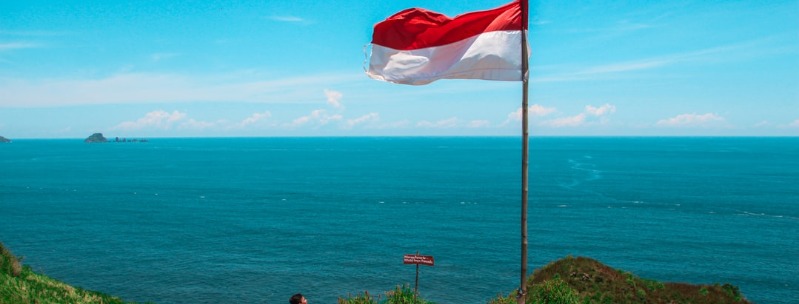Best Indonesia Beach Destinations 2025
For sheer size, scale, and variety, Indonesia is pretty much unbeatable. The country is so enormous that nobody is really sure quite how big it is; there are between 13,000 and 17,000 islands.
It’s certainly the largest archipelago in the world, spreading over 5200km between the Asian mainland and Australia, all of it within the tropics and with huge areas of ocean separating the landmasses.
The largely volcanic nature of the islands has created tall cloud-swept mountains swathed in the green of rice terraces or rainforest, dropping to blindingly bright beaches and vivid blue seas, the backdrop for Southeast Asia’s biggest wilderness areas and wildlife sanctuaries.
Amed and Jemeluk
From Culik, 10km beyond Tirtagangga, the junction of the road around the far east and the Amlapura-Singaraja road, it’s 3km to the picturesque, sleepy fishing village of Amed, with a one-kilometer-long black-sand beach and hills rising up behind. About 2km beyond the village, Congkang 3 Brothers has simple bungalows and across the road, there is a beach-side restaurant. A few hundred meters further round the coast, Bamboo Bali is a good budget choice, although it’s a short walk to the beach.
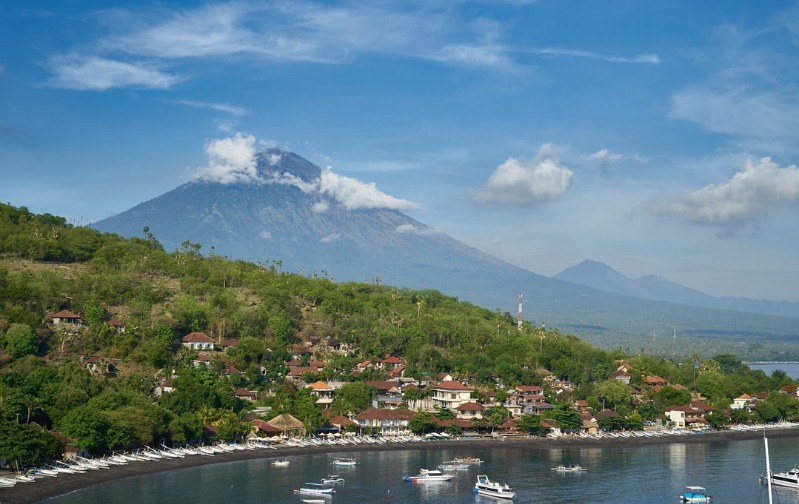
Less than 1km further on, the village of Jemeluk is the diving focus of the area: a sloping terrace of coral leads to a wall dropping to a depth of more than 40m and there is plenty of fish. Eco-Dive, attached to Dharma Samadi restaurant and bungalows, arranges local dives and snorkeling. One kilometer further around the coast, Amed Beach Cottages is situated by the beach with various standards of smart bungalows, and a pool. Mega Dive Centre is here, offering introductory dives, dives for certified divers, and PADI courses. Just beyond this, the Kusumajaya Indah has attractive bungalows in a lovely garden that slopes down to the rocky beach.
The next bay along cradles the small village of Bunutan, a peaceful and rural spot just behind the local beach. On the climb up out of the village look out for the tiny Warni’s Warung on the cliff side of the road, the perfect spot for a sunset drink. The views to the northwest are stunning and they have a couple of simple bungalows.
Lipah beach, although still very peaceful, is the most developed beach. Wawa Wewe and Tiying Petung stand side by side and are great, relaxed places offering occasional live music, a range of Western and Indonesian dishes, and simple accommodation. There is another headland and several kilometers between here and the bay at Selang, almost 12km from Culik, where Good Karma is currently the easternmost accommodation. It is right on the black-and-white sand beach, and it offers good snorkeling. There are various standards of accommodation and deep, relaxing verandahs set in a gorgeous garden – an oasis in the midst of a parched landscape.
Bali Beaches
The small volcanic island of Bali – the only Hindu society in Southeast Asia – has long been Indonesia’s premier tourist destination, with its fine beaches, pounding surf, emerald-green rice terraces, and exceptionally artistic culture.
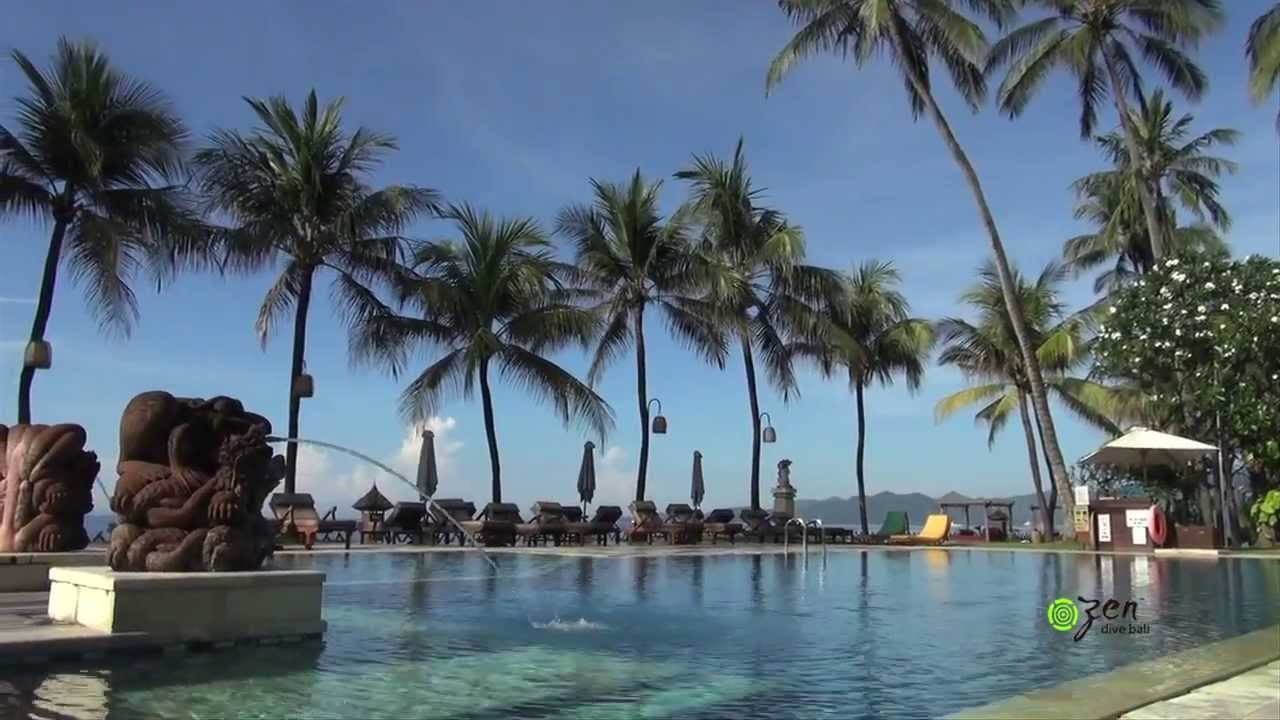
As a result, it has become a popular tourist destination, with the attendant problems of congestion and commercialization. However, Bali’s original charm is still very much present, with its stunning Hindu temples and spectacular festivals set off by the gorgeously lush interior landscape.
Bengkulu Beaches
Pantai Panjang beach is only 3 km from the center of Bengkulu City. The Beach is seven kilometers in length with a width of 500 meters on hotmix street. Many public transportation to and from the beach are available. There are spruce-fir grows along the beach. The restaurants and hotel facilities are also available.
Pasir Putih beach is located near to the Samudra Pulau Baii harbor. The distance is about 19 km away from the center of Bengkulu city. The road condition in this area is good. This place could be reached by any kind of four-wheel vehicle. The beach condition is clean with its white sand and, spruce-fir grows along the coast.
Bira Beach
About 190km southeast from Makassar, tiny Bira is an unassuming group of wooden homes 4km north of Bira Beach , also known as Paloppalakaya Bay, where the blindingly white sand is fringed by heaps of tourist accommodation.
Shallow water off the beach is safe for swimming, ending in a coral wall dropping into the depths about 150m from shore.
Snorkellers can see turtles and manta rays here, with exciting diving deeper down featuring strong currents, cold water and big sharks.
Ende Beaches
Situated on a narrow peninsula with flat-topped Gunung Meja and the active volcano Gunung Ipi at the sea end, the port of Ende is the largest town on Flores and provides access for Keli Mutu and Moni.
Ende suffered severe damage in the 1992 earthquake that razed Maumere and killed several hundred people here. The town still seems shaken by the whole thing – ramshackle, battered and with little to attract the tourist other than banks and ferries to other destinations.
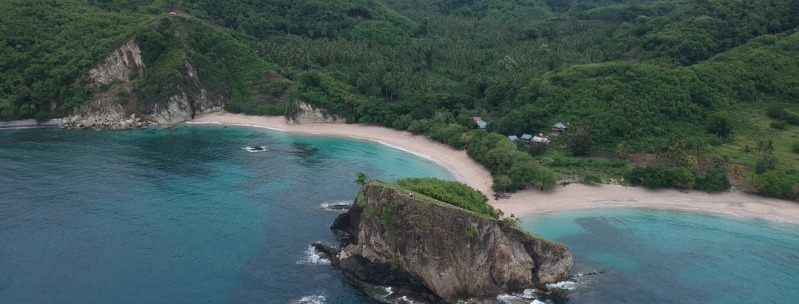
However, black-sand beaches stretch down both east and west coasts: the Bajawa road runs right along the seafront, so just catch a bemo out to Ndao bus terminal and the beach begins right there.
The town is also an ideal starting point for exploring villages that specialize in ikat weaving. Ngella is a weaving village about 30km east from Wolowaru terminal in Ende, near the coast: take a bemo or truck (Rp1500).
Grajagan Beaches
In the far southeastern corner of Java, the fishing village of Grajagan has become famous for the world-class surf in Grajagan Bay, whose awesomely long left-handers, promising endless tubes and walls, are known as G’ LAND .
The beach, Pantai Coko, is signed from the village: it’s 300m to the gate and then another 2km through the forest to the black-sand beach.
Due to the surf, take local advice from the forestry office about safe swimming spots, and never swim near the rocks.
Kuta Beaches
The peaceful little south-coast fishing village of Kuta , 54km from Mataram, has a wide, white-sand beach and is rapidly becoming the favorite choice of Lombok travelers. The big swell here makes the sea good for surfing and there are lovely beaches within walking or cycling distance, but no diving or snorkeling.
The simply glorious beaches of Seger and Tanjung Aan are easily accessible from Kuta and, at a push, walkable, though bicycles are a good idea. Seger is closest to Kuta (1km east) and is now the location of the luxury Novotel. To reach Tanjung Aan (5km), follow the road east out of the resort and take the first sealed turning to the right. There are actually two perfect white-sand beaches here, Aan to the west and Pedau to the east, separated by an outcrop. The only facilities are a few drinks stalls.
Along the coast west of Kuta you can explore half a dozen or so of the prettiest beaches on the island, but you’ll need your own transport. A couple of kilometers out of Kuta you’ll pass the “MTM 64” sign; just under 1km west of this, look out for a dirt track heading off to the coast. After 2km it reaches the coastal village of Are Goleng. The beach here is about 400m long and the seaweed beds in the shallows are clearly visible.
The next beach west is Mawan, reached by a sealed road just beyond the “Mataram 66km” sign. The bay is very attractive, and almost semicircular; there are no warung here.
Continuing west, access to the beach at Mawi isn’t easy. Take the next sealed road branching off seaward; after 1500m it degenerates into a track before ending in a plantation with a couple of houses. The people here are well used to keeping an eye on vehicles, as this is a favorite beach with surfers, but you should pay them for it. It’s a few hundred meters walk to the lovely white-sand beach, separated from nearby Rowok by a rocky outcrop.
Lampu’uk Beaches
Just 13km west of Banda, Lampu’uk beach is a glorious sandy arc that’s both a popular day-trip and a pleasant alternative base for travelers, chiefly because of the excellent Aceh Bungalows on the beach here.
Catch labi-labi (bemo) #4 from Jalan Diponegoro and ask the driver to stop at MNS Balee, a small school and council office that’s a fifteen-minute walk from the bungalows.
Lovina Beaches
Lovina stretches along 8km of black-sand beach, the largest resort in Bali outside the Kuta-Legian-Seminyak conurbation. Beginning 6km west of Singaraja, the resort encompasses six villages: Pemaron, Anturan, Tukad Mungga, Kalibukbuk, Kaliasem and Temukus. Kalibukbuk is generally accepted as the centre of Lovina and it’s here you’ll find most tourist facilities.
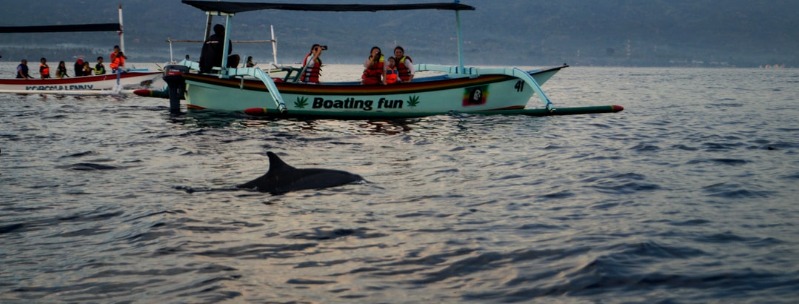
Many people consider the early-morning dolphin trips from Lovina to be the highlight of their stay, but others find them grossly overrated. Boats leave at 6am and cost Rp20,000 per person for the two-hour trip; book directly with the skippers on the beach if you can. The reef off Lovina used to stretch at least 5km along the coast, but anchors and fish-bombs have caused severe damage.
One popular outing ftrom Lovina is to Bali’s only Buddhist monastery, the Brahma Vihara Ashrama , 10km southwest of Lovina, which can be combined with a visit to the hot springs at Banjar.
To get around the resort, you can pick up the frequent bemos (4am-9pm) that zip through between Singaraja and Seririt. Vehicle rental is widely available: prices start at around Rp70,000 a day.
Lovina’s tourist office (Mon-Sat 8am-8pm) is on the main road at Kalibukbuk and the police station is in the same building.
Nusa Lembongan Beaches
Circled by a mixture of pure white-sand beaches and mangrove swamps, the tiny island of Nusa Lembongan (4km by 3km) is sheltered by coral reefs which provide excellent snorkelling and create the perfect conditions for seaweed farming. It is also a major draw for surfers.
All the accommodation is in Jungutbatu on the west coast and southeast of this in Chelegimbai and Mushroom Bay (Tanjung Sanghyang). There is no post office on the island, and electricity is currently produced by individual generators, which close down around 10.30pm.
The Perama office serves as the tourist information service and is in Jungutbatu between Pondok Baruna and Nusa Indah bungalows; you can book tickets here to destinations on Bali, Lombok and Sumbawa. There are at least daily departures, but all destinations apart from Ubud, Kuta and Sanur require a stop-over on the way.
The surf breaks are all accessible from Jungutbatu and you can charter boats to take you to the snorkelling spots off Mushroom Bay, at Mangrove Corner and Sunfish (prices start at Rp25,000 per person). You can walk around the island in about three hours.
Ranged along the coast for well over 1km, the attractive village of Jungutbatu is a low-key place, with several losmen and a few shops. The accommodation places at the north end of the beach are grouped close together, spreading out further south.
Just a few kilometers southwest of Jungutbatu, the fabulous white-sand cove of Mushroom Bay has long been a favorite snorkeling spot. It’s a great place, although don’t expect peace once the day-trippers arrive from the mainland.
Padang Bai Beaches
Padang Bai the port for Lombok (ferries run to Lembar every 2hr), nestles in a small cove with a white-sand beach lined with fishing boats.
The jetty, ferry offices and car park are all at the western end of the bay, and everything is within easy walking distance from here. Increasingly, people are choosing to stay a night or two in Padang Bai, and the village has developed into a small laid-back resort.
If you find the main beach a bit busy, the bay of Biastugal , to the west, is smaller and quieter. Follow the road past the post office and, just as it begins to climb, take the track to the left.
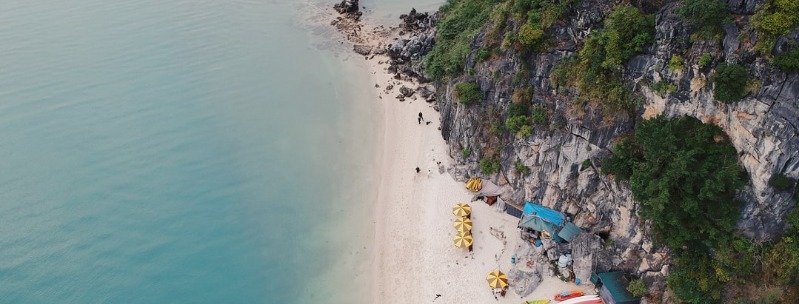
Alternatively, over the headland in the other direction, take the path from Pura Silayukti, to another small, white cove. Several places in Padang Bai rent out snorkeling equipment: there’s good snorkeling at Blue Lagoon, just around the headland in Amuk Bay, but it’s even better to charter a boat; ask at Celagi restaurant or your guesthouse. The dive operation, Geko Dive, is a large set-up on Jalan Silayukti with a lot of experience diving in the area and offers the full range of PADI courses (PADI Open Water from US$320 per person) and dives for experienced divers.
Bemos arrive at, and depart from, the port entrance; orange for Candi Dasa (20min) and Amlapura (40min), blue or white for Klungkung (aka Semarapura; 20min).
Pulau Bintan Beaches
Situated less than 10km from Batam at the closest point, Pulau Bintan is about two and a half times the size of Singapore, which seems to have left plenty of room for traditional culture to survive alongside the plush tourist development. Not only is it more attractive than other nearby islands, but there’s much more of an Indonesian feel about the place and things are reasonably priced.
Tanjung Pinang, the main town on Pulau Bintan, has been largely untouched by the tourist influx, and the low-key guesthouses of Trikora on the east coast continue to cater for those who want a few days of sun and sand.
At Trikora , on the east coast of Pulau Bintan, the beach area covers around 30km of coastline comprising bay after palm-fringed bay. The disadvantage is that, when the tide goes out, it goes quite a long way, leaving dull-looking flats.
The accommodation begins 5km north of the small, attractive village of Kawal, situated at the point where the main trans-island road reaches the east coast, and where many of the houses are built over the river on stilts. Heading north from Kawal, you’ll first come to Bukit Berbunga Cottages, where a hundred-meter track leads down to the wood-and-thatch cottages with attached mandi, mattresses on the floor and electricity at night. Just 200m north, Yasin’s Guest House has three types of wood-and-thatch chalets on offer, all with verandahs, and some with mandi. Another kilometer north, Trikora Beach Resort is the most upmarket place on this coast, with attractive gardens, good views, and comfortable bungalows with verandah, air-con and hot water.
One of the best beaches on the coastline, Trikora Tiga , is about 13km further north and boasts several kilometers of glorious white sand, gently lapped by turquoise waters. At the weekends, several warung open up for day-trippers, but during the week it’s pretty much deserted.
Pulau Weh Beaches
A mountainous outcrop of dark green rising sharply from the azure waters of the Indian Ocean north of Banda Aceh, Pulau Weh is yet another gorgeous Indonesian paradise, with excellent diving and snorkeling possibilities and white sandy beaches.
For most visitors, Sabang is just a temporary stop on the way to the beaches on Weh’s northwestern promontory. The most popular of these is Ibioh , 45 minutes by bemo from Sabang; the service runs three times a day (10am, 1pm & 6pm, returning at 6am, noon & 4pm). Ibioh is a tiny fishing village, at the end of which lies the tourist resort, actually little more than a collection of simple tourist bungalows and restaurants stretched along a forested hillside running down to the shore. The main attraction here is the excellent snorkelling – gear can be rented from Stingray’s office in Ibioh.
The island features two other beaches with accommodation. Rapang is an attractive, horseshoe-shaped beach, 2km south of Ibioh, with its own family of five hawksbill turtles. There is a small selection of bungalows here, with prices similar to those at Ibioh.
The third beach, Lhong Angen , lies on the western side of the island. It’s one of the best, although for six months of the year it completely disappears – swept away by the sea in November, returning again in May.
Pura Tanah Lot
Dramatically marooned on a craggy wave-lashed rock sitting just off the southwest coast, Pura Tanah Lot really does deserve its reputation as one of Bali’s top sights.
Fringed by frothing white surf and glistening black sand, its elegant multi-tiered shrines have become the unofficial symbol of Bali, appearing on a vast range of tourist souvenirs.
Unsurprisingly, the temple attracts huge crowds every day, particularly around sunset. Tanah Lot is said to have been founded by the wandering Hindu priest Nirartha and is one of the most holy places on Bali.
Only bona fide devotees are allowed to climb the stairway carved out of the rock face and enter the compounds; everyone else is confined to the base of the rock.
Sanur Beach
Stretching down the southeast coast just 18km northeast of Ngurah Rai Airport, Sanur is an appealing, more peaceful alternative to Kuta, with a long, fairly decent white-sand beach, plenty of attractive accommodation in all price brackets and a distinct village atmosphere.
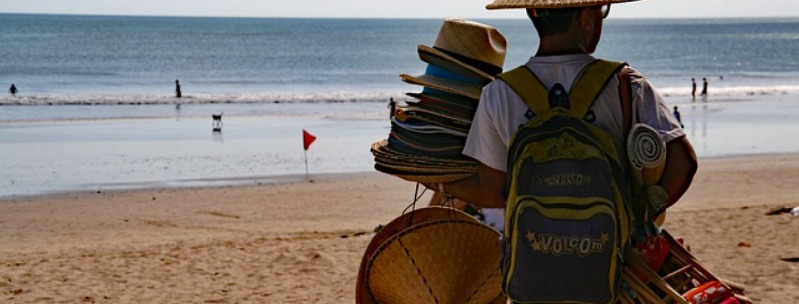
There are plenty of restaurants and some bars, but the nightlife is pretty tame. A huge expanse of shore gets exposed at low tide and the reef lies only about 1km offshore at high tide. The currents beyond the reef are dangerously strong, which makes it almost impossible to swim here at low tide, but at other times of day swimming is fine and watersports are popular.
You’ll find Sanur’s best sand in front of the Grand Bali Beach in north Sanur, where non-guests can rent sun-loungers for a small fee.
Many of south Bali’s watersports facilities are centered in Sanur. In general, prices are higher at the hotels than at the independent places on the beachfront and along the main roads. All these places rent out canoes, windsurfers and jet skis, and most offer parasailing as well.
Sumbawa Beach
East of Lombok, the scorched, mountainous island of Sumbawa is often perceived as an inconvenient but necessary bridge between Lombok and Komodo, but it does hold some fine west-coast beaches, as well as spectacular coral just offshore at Pulau Moyo.
In the east, the exceptional reef breaks at Hu’u have become legendary amongst surfers. Sumbawa is a strictly Muslim enclave and both male and female travelers should dress conservatively.
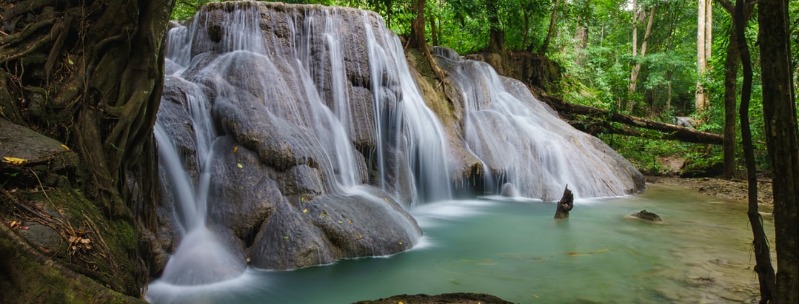
South of the large but uninteresting town of Dompu, on a white-sand coast with swaying palm trees, is the wave rider’s Mecca of Hu’u. The waves break over razor-sharp finger coral, so bring a helmet and first-aid kit.
Generally, surfing is best between May and August, with the absolute prime in June and July. It’s practically impossible to get a bed during these months so bringing a tent is a good idea.
More and more travelers are choosing to break their cross-island journey at the port town of Sape. The town itself is no worse than Bima, and staying there means you get a full night’s sleep before catching the 8am ferry to Komodo and Flores.
Nearby Gili Banta is a good day-trip should you get stuck, with nice beaches and a burgeoning turtle population.
